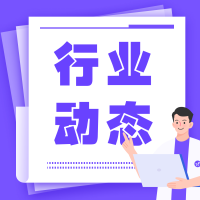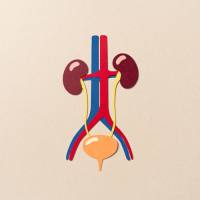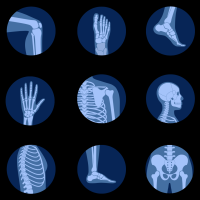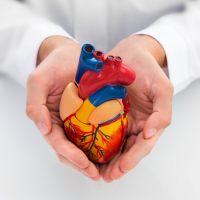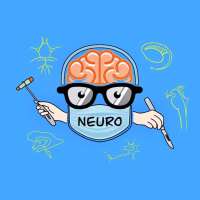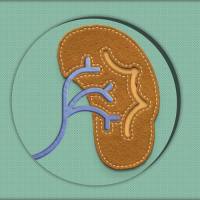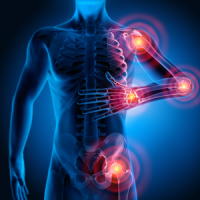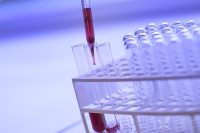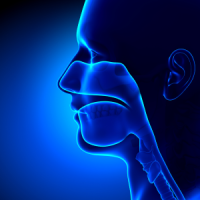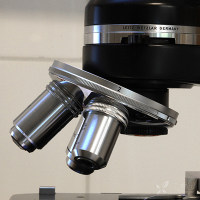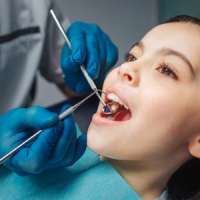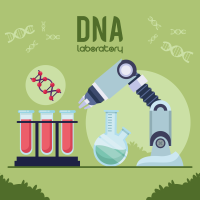撼动经典免疫学的“危险信号”学说。
An immune system is required in any host that evolves slowly relative to the pathogens that attack it. This immune system must somatically generate and regulate new specificities.
A history of immunological models :
1959 : original self-nonself (SNS) discrimination (SNSD) model in F. Macfarlane Burnet's clonal selection theory said that each lymphocytes expresses multiple copies of a single surface BcR and signaling through this surface antibody initiates the immune response. The self-reactive lymphocytes are deleted early in ontogeny (Lederberg) and hence the universe of antigens is split into 2 sets : self (set a) and nonself (set b). The same principle was later applied to TcR of T cells
Supporting evidences :
Owen discovered that dizygotic cattle twins sharing common blood circulation were mutually tolerant to each other's blood cells even in adulthood
Medawar et al. found that adult mice would accept foreign skin grafts if they had been injected as babies with cells from the donors
Problems : this model does not explain ...
since T cells respond to short peptides and crossreact on non-identical but similar peptides, "ignorant" T cells should often be activated by cross-reactive environmental antigens and autoimmunity should be a frequent and irrevocable event, rather than a rare occurrance
what happens when the peptides change during puberty (new hormones), metamorphosis, pregnancy (new milk proteins, new foetal proteins), and ageing
why do we fail to make immune responses to vaccines composed of inert foreign proteins unless we add adjuvants
why do we fail to reject tumors, even when many clearly express tumor-specific antigens (TSA)
1969, 1st modification (2 signal model for B cells / associative recognition model : Bretscher and Cohn, then updated and expanded over the years by Langman and CohnRef) : realizing that autoimmunity would be rare if immunity required the activation of 2 cells recognizing different specificities on the same antigen, they proposed that the B cells would die when they see antigen via BcR stimulation (signal 1) unless rescued by help (signal 2) from helper T lymphocytes.
Supporting evidences : autoimmunity is a rare occurrance
Problems : this model does not explain ...
why alloreactivity is often stronger than xenoreactivity
chicken lymphocytes respond more strongly to other chicken cells than to quail cells
human T cells respond better to cells from another human than to mouse cellsRef
what happens when the peptides change during puberty (new hormones), metamorphosis, pregnancy (new milk proteins, new foetal proteins), and ageing
why do we fail to make immune responses to vaccines composed of inert foreign proteins unless we add adjuvants
why do we fail to reject tumors, even when many clearly express tumor-specific antigens (TSA)
1975, 2nd modification (2 signal model for helper T cells : Lafferty and Cunninghamref) : T helper cells die when they see antigen via TcR stimulation (signal 1) unless rescued by species-specific co-stimulation (signal 2) from accessory cell (now known as the antigen-presenting cell (APC)). Signal 1 alone would lead to tolerance of the T cellRef.
Supporting evidences :
alloreactivity is often stronger than xenoreactivity
autoimmunity exists as responses are initiated by APCs, which are not antigen specific (they capture all sorts of self and foreign substances), making this model apparently unfitted into a self-nonself mode.
Problems : this model does not explain ...
what happens when the peptides change during puberty (new hormones), metamorphosis, pregnancy (new milk proteins, new foetal proteins), and ageing
why do we fail to make immune responses to vaccines composed of inert foreign proteins unless we add adjuvants
why do we fail to reject tumors, even when many clearly express tumor-specific antigens (TSA)
1989, 3rd modification (infectious nonself (INS), Charles A.Janeway Ref) : even APCs have their own form of self/nonself discrimination. APCs are not constitutively active and do not co-stimulate unless activated via binding of nonself pathogen-associated molecular patterns (PAMPs) to cell surface pattern recognition receptors (PRRs) for evolutionarily distant infectious non-self (signal 0), i.e. the immune system has a phylogenetic memory of infectious organisms. As PAMPs are not produced by healthy host cells, the universe of antigens is split into 2 sets : noninfectious self (set a) and infectious nonself (set f). It tends to ignore noninfectious nonself (set b - f). Thus, there are now 2 different types of nonself recognition : a genetically encoded set of PRRs assigned to the cells and molecules of the innate immune system and a somatically generatede set of receptors expressed by the cells of the adaptive immune system.
Supporting evidences :
we fail to reject tumors even when many clearly express tumor-specific antigens (TSA)
we fail to make immune responses to vaccines composed of inert foreign proteins unless we add adjuvants
peptides can change during puberty (new hormones), metamorphosis, pregnancy (new milk proteins, new foetal proteins), and ageing without triggering immune responses
Problems : this model does not explain ...
why oral administration of antigen sometimes lead to vaccination (as in the oral polio vaccine (OPV)) and sometimes to tolerance
why is the hamster (Cricetinae) cheek pouch (a place in which hamsters carry nuts, with all of their concomitant fungi and bacteria), an immunologically priviliged site
what is the difference that leads to gene therapy (no immune response) versus DNA vaccination
why viruses that do not generate dsRNA stimulate immunity
how nonbacterial adjuvants, such as alum, work
why transplants are rejected and why livers are mose easily transplanted than other organs
why tumors are sometimes spontaneously rejected
why do so many people have autoreactive T and B cells without any sign of autoimmunity while others get autoimmune diseases
1994, 4th modification (alarm / danger model, Polly Matzinger Ref) : an evolutionarily useful immune system should concentrate on those things that are dangerous, rather than on those that are simply foreign. There are 3 resaons for this shift in viewpoint :
there is no need to make a response to everything is foreign. Eg there is no need to eliminate ...
a lot of harmless foreign material in the air we breath and the food we eat
a virus that enters a cell, makes a few copies of itself and leaves without doing any damage (we might even want to welcome such viruses for the genes that they could bring us)
the commensal bacteria in our guts that provide us with vitamin K
the foetuses that make the next generation
peripheral tissue-specific antigens that are not ectopically expressed in the thymus or bone marrow existRef
bodies (self) do change through puberty (new hormones), metamorphosis, pregnancy (new milk proteins, new foetal proteins) and ageing : have been all these new antigens previously ectopically expressed in thymus or bone marrow ?
The universe of antigens is split into 2 sets : those associated with dangerous entities or harmless ones, defining as dangerous anything that induces stress or necrotic (nonapopotic) cell death. APCs are not constitutively active and do not co-stimulate unless activated by endogenous cellular alarm signals (signal 0) sent from surrounding distressed cells :
sudden loss of connection to a cell to which it was connected
release of a substance elaborated or modified exclusively by stressed cells
monosodium urate (MSU) crystals increase the expression of co-stimulatory molecules by bone marrow-derived DCs, while soluble uric acid is unable to support DC maturation in vitro : when co-injected with antigen in vivo, MSU don't affect the uptake of antigen by DCs but significantly enhance the generation of responses from CD8+ T cells. Eliminating uric acid in vivo inhibits the immune response to antigens associated with injured cells, but not to antigens presented by activated DCsref. Increased uric acid production is observed to be a general characteristic of cells undergoing death : uric acid has been reported to precipitate in vivo and during cell deathh the levels of uric acid produced locally could increase sufficiently to cause this endogenous metabolite to precipitate and promote DC maturation and activation. This is the basis for the pathogenesis of gout.
IFN-a made by virus-infected cells
heat-shock proteins (HSPs)
soluble heparan sulphate (an extracellular breakdown product of hyaluronan made when vessels are damaged) binds to TLR4
release of a normal intracellular molecule
DNA
RNA
Cells that are healthy may send calming signals to local APCs, while cels that die by apoptosis send "eat me" signals to a neighbouring scavenger that should not induce the expression of costimulation..
Dangerous entities may be self (set c) such as mutations that lead to stress or inappropriate cell death or inefficient scavenging; or nonself, such as pathogens (set e), environmental toxins (set d), and such. Set f would contain fetuses and evolutionarily distant nonself organisms that have PAMPs, but that are not dangerous (e.g. symbiotic organisms, well-adapted viruses).
Anyway the infectious nonself (INS) model and the danger model share common ground as mitochondria are essentially intracellular bacteria, so the same mechanisms could potentially be employed both to detect pathogens and to detect host cell lysis. In self-nonself models, T cells must be trained to tell the difference between these foreign and self antigens. Instead in an immune system poised for danger, the T cells need only to distinguish APCs from everything else. To build such a T cell population, we need 3 basic "laws of lymphotics" and 1 minor exception :
resting T cells need 2 signals to be activated :
signal A from TCR binding to MHC/peptide
signal B (co-stimulation) from an APC
T cells die if they receive signal A without signal B (leading to tolerance) and become activated if they receive both.
resting T cells can receive signal B only from APCs : dendritic cells (DCs) serve as APCs for both virgin and experienced T cells, and B cells can re-stimulate experienced but not virgin T cells. Though other tissues might express surface MHC/peptide complexes (signal A), they do not express the appropriate co-stimulatory signals (signal B) needed by T cells.
exception : during negative selection thymocytes would be unable to receive signal B from any cell, including professional APCs. Any thymocyte recognizing the normal surface MHC/antigen profile of a DC would thus be eliminated by the receipt of signal A without signal B.
the activated effector stage only lasts for a certain period of time. During this time, T cells do not require signal B and can be triggered to function (eg. help B-cells or kill targets) by signal A alone (ie even by cells other than APCs). After a while, they either die or return to a resting state from which they can only be drawn again by the appropriate combination of signal A + signal B.
Among the virgin T cells circulating through the lymph node draining the infected site, some are specific for danger peptides displayed by the activated APC and others, having had no opportunity to become tolerant of non-thymic tissue antigens, will recognize peptides from the extra-thymic tissue : but because such autoantigen(s) is everywhere they will distribute all over the body. Each will kill a few tissue cells and then drain to a local lymph node : unless that node is draining an infected site, the autoreactive killers will not be reactivated. They will exit the node as resting memory cells and recirculate from blood to tissues : encountering autoantigen again on normal tissue cells, and thus receiving signal A without signal B, they will die, as will do any autoantigen-specific cell returning to the original infected area after the infection is cleared. "Normal" autoimmunity is self-limiting as killer cells induce apoptosis in their targets : although the 51Cr release assay gives the impression that targets die by membrane disruption, DNA fragmentation actually occurs hours before the membranes disintegrateRef. In vivo, these apoptotic cells are probably scavenged long before their membranes fall apart. Consequently death induced by killer cells does not signal local APCs to perpetuate the immune response. Thus, although both autoreactive and danger-specific killers follow the same laws, their fates differ because their antigens are critically dissimilar : autoantigens are continuously expressed by healthy cells incapable of delivering signal B. By sheer numbers and persistence, they ensure that circulating autoreactive cells should regularly be deleted. Of course the efficiency of deletion will depend on the size of an organ and the rate at which lymphocytes circulate through.
Supporting evidences :
neither lytic cell death nor production of stress proteins occur in ...
metamorphoses
puberty (many new hormones are produced)
pregnancy
new milk proteins from lactating breast
new foetal antigens : fetal cell migration is not universal but occurs in only a fraction of pregnancies, the mother is not continuously exposed to circulating fetal cells and, in fact, has the capacity to eliminate them without eliminating the fetusRef
ageing
infections from ...
useful commensal organisms
harmless opportunistic organisms
With such an immune system we are not sterile static entities and we live in harmony with our internal and external environment, becoming a habitat
tumors (cells die by apoptosis). Further as tumor grows it induces deletion of tumor specific T cellsRef. This view fits with the finding that :
T cell clones isolated from such patients can kill melanoma cells taken from HLA matched patients that have not rejected their tumors, showing that it is not lack of antigen expression that prevents tumor rejection
temporaneous induction of active tumor immunity :
when it becomes repeatedly infected, stressed or otherwise necrotic, small tumors spontaneously regress thanks to any tumor specific T cell clone that had not yet been deletedRef. In some cases, the T cells might also destroy normal cells of the same type expressing similar antigens (e.g. melanocytes leading to the vitiligo occasionally found with spontaneous melanoma regression).
an injection of heavily irradiated tumor cells transfected with GM-CSF can evoke protection against the untransfected tumor. This treatment has 2 important features :
though radiation death is usually apoptotic, an injection of large numbers of dying cells may well overload local scavenging capacities, allowing some of the tumour cells to disintegrate before they can be cleared, and thus signalling local APCs.
GM-CSF enhances the well being of DCs in vitro and may do the same in vivo.
The combination of dying cells and APC-enhancing cytokine would thus provoke activation of tumor specific T cells that could now kill a certain number of living, untransfected tumor cells.
activation by any crossreactive antigen should be enough : the immunizations could merely be injections of disrupted tumor cells in adjuvant. The injections might consist of tumor cells that had been infected with a lytic virus or an inducible death gene, with or without the addition of APC-enhancing cytokines. One could paint visible surface tumors (repeatedly) with noxious substances, calculated to kill off enough tumor cells to activate local APCs. It might help to add carrier determinants to activate helper cells, or to inject professional APCs fed with the tumor cells (or their antigens, if known).
Though a single immunization would initiate immunity, the response would soon die down for lack of repeated stimulus : the killers would rest down and, in the absence of more danger signals, would not be re-activated, explaining why the protection generated by the transfected tumor can be overcome with a large enough challenge of normal tumor cells. Even if some of the tumor were destroyed by killers activated during the first immunization, this apoptotic death would not maintain the response. The tumor meanwhile, like any other tissue expressing signal A without signal B, would induce deletion of tumor-specific memory cells as they rested down. To be effective, therefore, immunizations should be repeated until the last vestiges of tumor are gone. In addition such immunizations should be done early, while the tumor is small and has not had time to delete a large number of tumor specific T killers, or alternatively they should be held off for a while after removal of the main tumor mass in order to give the thymus time to repopulate the periphery with new tumor specific T cell populations.
temporaneous induction of adoptive tumor immunity : if TILs are removed from the tumor, activated in vitro and re-injected along with a source of IL-2, they may well return to the tumor and engage in a round of destruction. If the tumor burden is small, this may be enough to destroy it. However, if there are too many tumor cells for the injected T cells to destroy in the first round, the T cells will go through their natural cycle of resting down and waiting to be re-stimulated. Without a source of activated APCs, they will remain in the resting state, now to be tolerized by recognition of tumor antigens in the absence of signal B.
No signal 0 is delivered => no activation of local APCs => hence no immune response occurs.
lytic cell death occurs in ...
tissue transplants : they cannot be performed without surgical and/or ischemic damage
the lower extent of damage can explain why long-term living unrelated renal donation (LURD) allograft survival rates are lower than those for HLA-identical but equivalent to those of haploidentical and better than those of cadaveric kidney transplantationsRef
graft-versus host disease (GvHD) is less severe ...
... in gnotobiotic animals undergoing allogeneic bone marrow transplantation (BMT)Ref1, Ref2
... in recipients that have had gentle rather than harsh preconditioning treatment : synergistic damage by increased total body irradiation (TBI) and allogeneic donor cells that permits increased translocation of lipopolysacharide (LPS) into the systemic circulation, which triggers excess TNF-a from macrophages priming the GVH reaction Ref
large organs, and those that have minimal blood-tissue barriers (like the liverRef) are more tolerized after allogeneic transplantation whereas small and/or well barricaded organs (brain, ...) induce deletion at a much slower rate. The process begins when APCs in the liver become activated by the surgical trauma, home to the local (recipient) lymph node and activate recipient's donor-specific T cells which then migrate to the organ and begin killing all donor cells, including hepatocytes, endothelial cells and APCs. After a while, all the bone marrow-derived APCs will have died, but the regenerating liver lasts longer, continues to offer signal A without signal B and, rather quickly because of its size, deletes all the relevant T cells. Should any HSCs remain, they can now take up residence, creating the chimerism that is often (but not always) seen in recipients of liver grafts. In immunologically mature hosts, chimerism resulted in immunity and stronger graft rejection. In immature hosts, it resulted in tolerance to the chimeric T cells, but not to graft antigens not expressed by the chimeric cellsRef.
an apparent exception to the idea that tissues induce tolerance to themselves comes from transplant recipients who suddenly stop taking cyclosporin A and reject their grafts, even though they may have had them for over 20 years! According to the model, these patients should be tolerant. The problem here is not the model but the drug : since CsA blocks signal A not signal B, the first law of lymphotics cannot operate and no deletion can occur. Although this effectively blindfolds the lymphocytes, the drugs must be given for life. This is nicely illustrated by an experiment in which rats were given allogeneic livers under a 2 week course of CsA and, at various times later, were immunized with donor-type skin :
skin grafts given 0-4 weeks after CsA withdrawal were rapidly rejected and also stimulated rejection of the livers
skin grafts given 8 weeks after CsA withdrawal were rapidly rejected but livers were not
The authors determined that there were 3 stages of reactivity :
during CsA treatment, alloreactive T cells were unable either to respond or be tolerized.
"transitional" stage : when the drug is withdrawn, the T cells were slowly tolerized unless activated by a new source of APCs. This stage is delayed by the CsA treatment
the animal had become solidly tolerant of the graft
Tissues cannot induce tolerance to themselves in the presence of a signal A blocker. This may also be why irradiated rodents whose immune systems are allowed to regenerate under the cover of CsA suffer autoimmune symptoms when the drug is discontinued. The solution, of course is to find drugs that block signal B without obstructing signal A, and some steps have already been made in this direction.
soluble CTLA-4 ...
evoked long lasting tolerance of xenogeneic islet grafts : the grafted tissue stayed in place, continually tolerizing for itself by expressing its antigens in the absence of signal B
inhibited antibody responses to KLH and SRBC though not permanently : that's why neither KLH nor SRBC persist for long in mice and, in their case, a temporary ablation could not generate long lasting tolerance
antibodies to adhesion molecules run the risk of inhibiting signal A, in which case, like CsA, they may stop rejection but nevertheless not allow for the induction of tolerance
An optimal combination might be to give blockers of signal B along with a source of donor's HSCs in addition to the grafted organ : in this case, the organ itself should tolerize any mature T cells and the stem cells should generate the necessary chimerism to induce tolerance of newly maturing T cells in the thymus, a protocol occasionally mimicked by liver grafts, accounting for their success.
extracorporeal shock wave lithotripsy (ESWL) causes IgA antibody against Tamm-Horsfall glycoprotein (THP) / uromucoid to be significantly higher (P < 0.05) in patients 30 days after treatmentRef
fine-needle aspiration biopsy (FNAB) of the thyroid causes appearance of IgM against thyroid hormones (THAb) in 4.2% and against thyroglobulin (TgAb) in 7% (however, in only a fraction of patients the immune response is followed by a IgG secondary one, long lasting in only a minority of patients)Ref
endolymphatic sac surgery in an opposite ear felt to be afflicted with Meniere's Disease causes autoimmune hearing loss in a healthy earRef
lymphocytes respond to myelin proteins after spinal cord injury (SCI) and may contribute to post-traumatic secondary degenerationRef. Nerve crush during Wallerian degeneration (WD) of the rat optic nerves (ON) induces expression of IL-18 mRNA and proteinRef
radiation-induced thyroid diseases include benign thyroid nodules, hypothyroidism and autoimmune thyroiditis, with or without thyroid insufficiency, as observed in populations after environmental exposure to radioisotopes of iodine and in the survivors of atomic bomb explosionsRef
processes leading to some autoimmune diseases :
mutations in genes governing the normal physiological death and clearance processes, in the absence of any foreigness
environmental pathogens or toxins that cause cellular stress or death
women seem to be more susceptible than men to certain autoimmune diseases
Rh disease of the newborn is much more often a problem rising in the second pregnancy than in the first
Although it has long been thought that the effector class of an immune response is tailored to the targeted pathogen (e.g. virus, intra- or extra-cellular bacterium, or worm), it is actually tailored to the tissue in which the response occur. Different tissues seem to have different means of determining the effector class of a response. For example, the class of response that occurs most often in the skin, type IV hypersensitivity, is characterized by swelling, redness, an influx of macrophages, and the production of TNF-a and IFN-g. Unlike skin, however both the gut and the eye can be destroyed by DTH responses, and the most common response in these organs is the production of IgA, an antibody found at high levels in tears, saliva, and gut secretions. To ensure that IgA is made, and TNF-a and IFN-g are not, the cells of the anterior chamber of the eye produce VIP and TGF-b1, 2 cytokines that are also made by the gut and that promote a switch to IgA and suppress the DTH response. Even innate lymphocytes appear to be useful self-reactive cells involved in local immunity.
Bibliography :
The danger model: a renewed sense of self by Polly Matzinger in Reflections on self : immunity and beyond, Science Vol.296 12 April 2002

